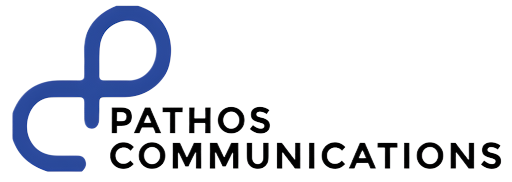Want insights from national news editors about what makes a story? Click here for our report

How to Become a Thought Leader
Now you can see the importance of being a thought leader and benefits of having an authoritative personal profile offline and online, how do you build one? The bad news is that it isn’t as easy as creating a few paid adverts with google keywords. The good news is that thought leadership is cheaper, more authentic and longer lasting. In this article, we outline tips on what you need to do to become a thought leader.
Find a storytelling angle
So, how do you become a thought leader? The first thing you need to do is identify what you are qualified to talk about. This doesn’t necessarily correlate with your job title, what your business does or topics specific to your industry. Be prepared to be flexible about your thought leadership topics to reflect what the wider public are interested in. Then be clever and marry the two.
For example, I’m an author of a memoir about discovering triathlon in later life and qualifying to represent GB in my age group. My thought leadership topics are not simply ‘running, cycling, swimming.’ If they were, I’d have a limited audience.
I delved deeper into my story to find themes that resonate with the zeitgeist: How women are put off sport because getting grubby doesn’t fit with aesthetic feminine ideals, how we can overcome self-limiting beliefs, the wholesome effects of outdoor sport, how extreme endurance training has increased my mental resilience in other areas of life, how western society bases social activities on excessive food and drink instead of activity….
You can tell I’m passionate about this can’t you? That’s what thought leaders have to be! The reason I was able to make a book out of my personal story, which went on to be longlisted for the William Hill Sports Book of the Year award, was because I extended my talking points to wider societal issues that other people relate to, instead of making it just about me.
Taking time to identify thought leadership topics and ideas – or storytelling angles – is always our starting point for every client no matter what their budget. We schedule a one-on-one session lasting a few hours where we understand you, your views, your expertise and the journeys you’ve been on. This is where we use our combined, expert experience of working in the media, public policy, TV production and publishing books to help people turn their experiences into strong stories.
Identify the right media coverage
The second thing you need to do in order to become a thought leader is match your thought leadership topics (or ‘messaging’ or ‘storytelling angles’ if you want to call it by a corporate term), with a realistic vehicle to broadcast it. Writing is by far the best way to communicate that you can solve someone’s problem. So, writing a so-called ‘advice piece’ to an industry publication is a powerful way to be seen as a thought leader. But there are other mediums to showcase expertise too – TV commentary, podcasts, talks.
Your different topics won’t work for all platforms. If you have an unusual story of how you started your business it might fit for a profile piece in a business magazine, but if you want to show how much you know about diversity and inclusion, for instance, it’s better to find journalists writing about this to give them some expert comments. This is where having knowledge of the international media and the different types of thought leadership opportunities comes into play. This is why we never do blanket press release pitches to the media.
How to amplify your thought leadership
Finally, you need to amplify content in order to become a thought leader. It used to be that a PR agency would get you a mention in the press and that was it – job done. But in a galaxy of digital content, you now need to amplify coverage through social media, a company newsletter, your own blog, SEO tricks and more.
And don’t forget the closing action, which is to have well written, consistent online bios. Thought leadership is the prompt for people to check you out. But your online profile must then also reflect what you can do for people and let people know you’re open for business.
For examples of how we’ve helped investors, CEOs, entrepreneurs, authors, academics and politicians with thought leadership see our customer success stories or take a look at some examples of thought leadership content utilised by CEOs.

